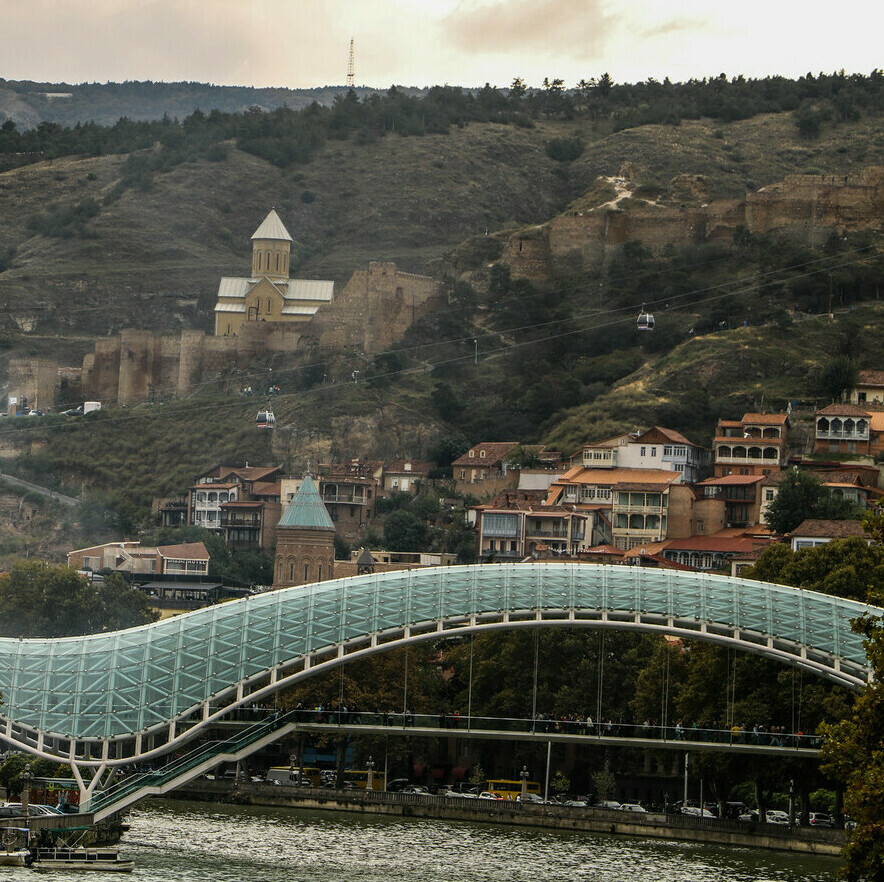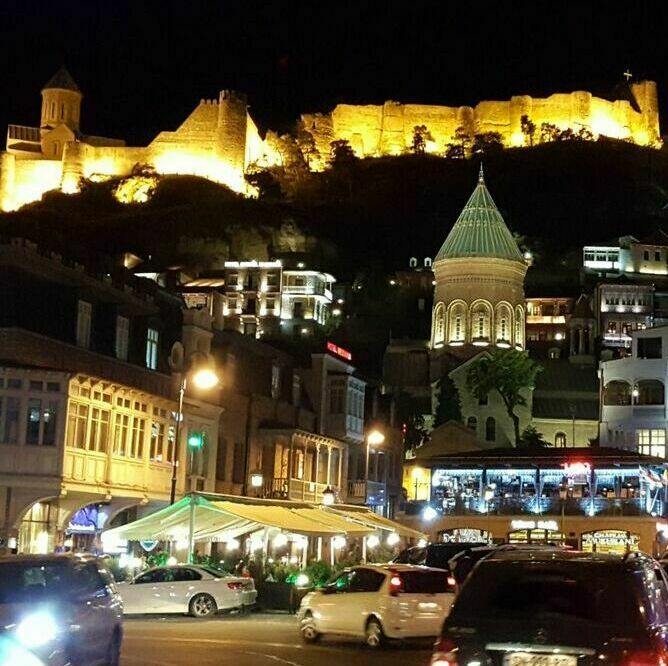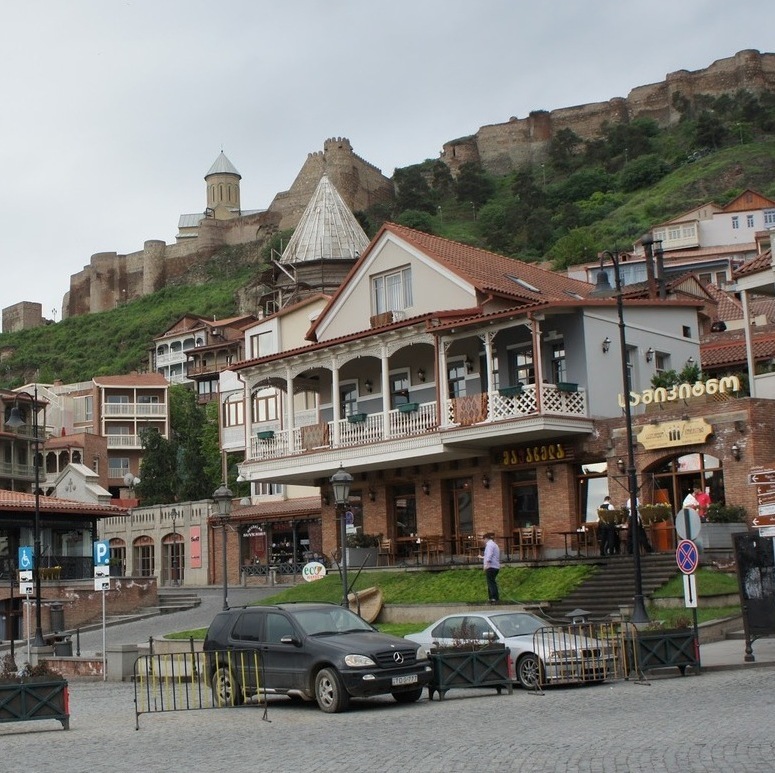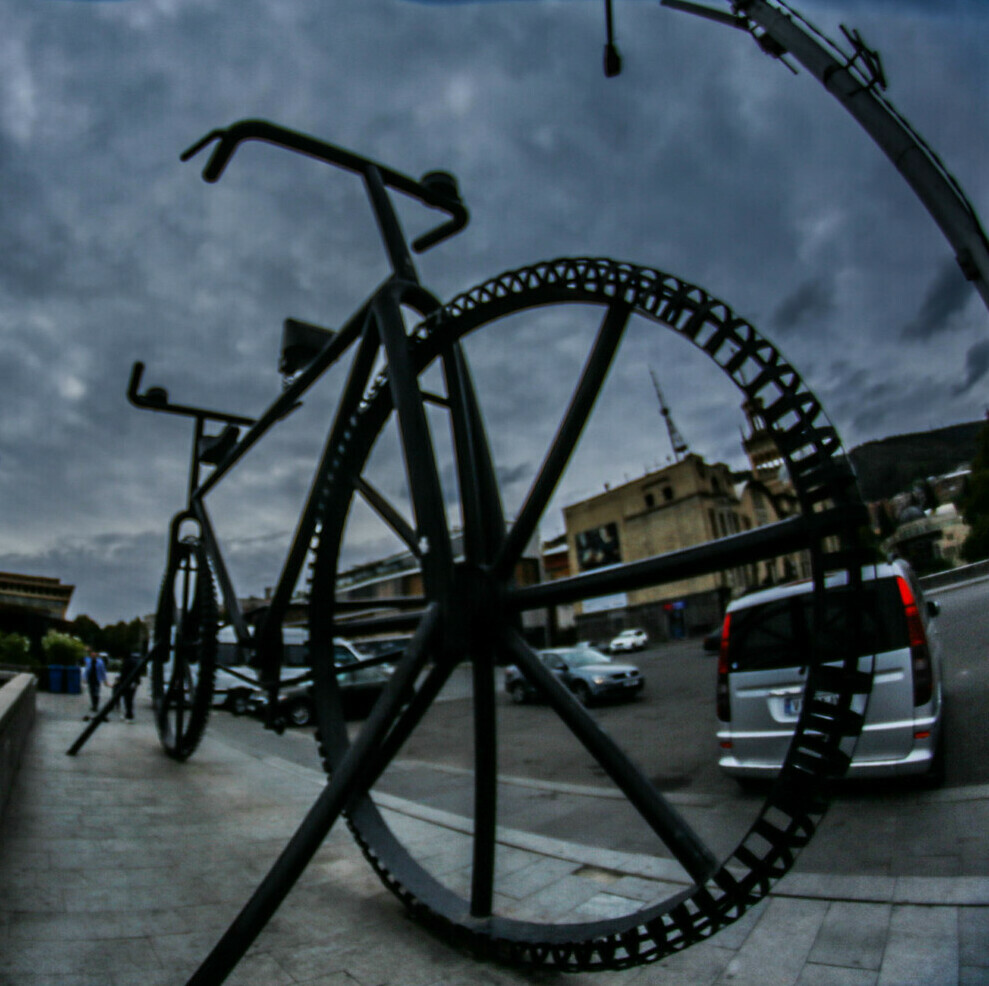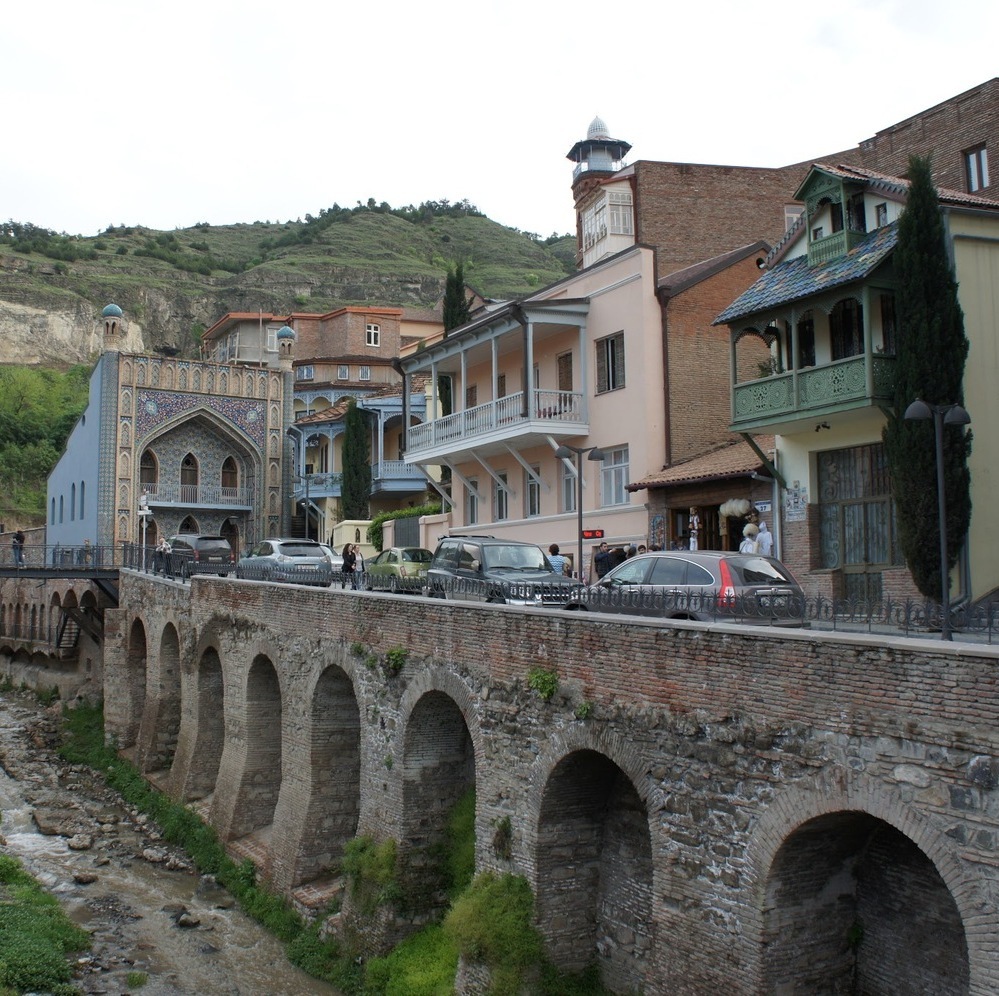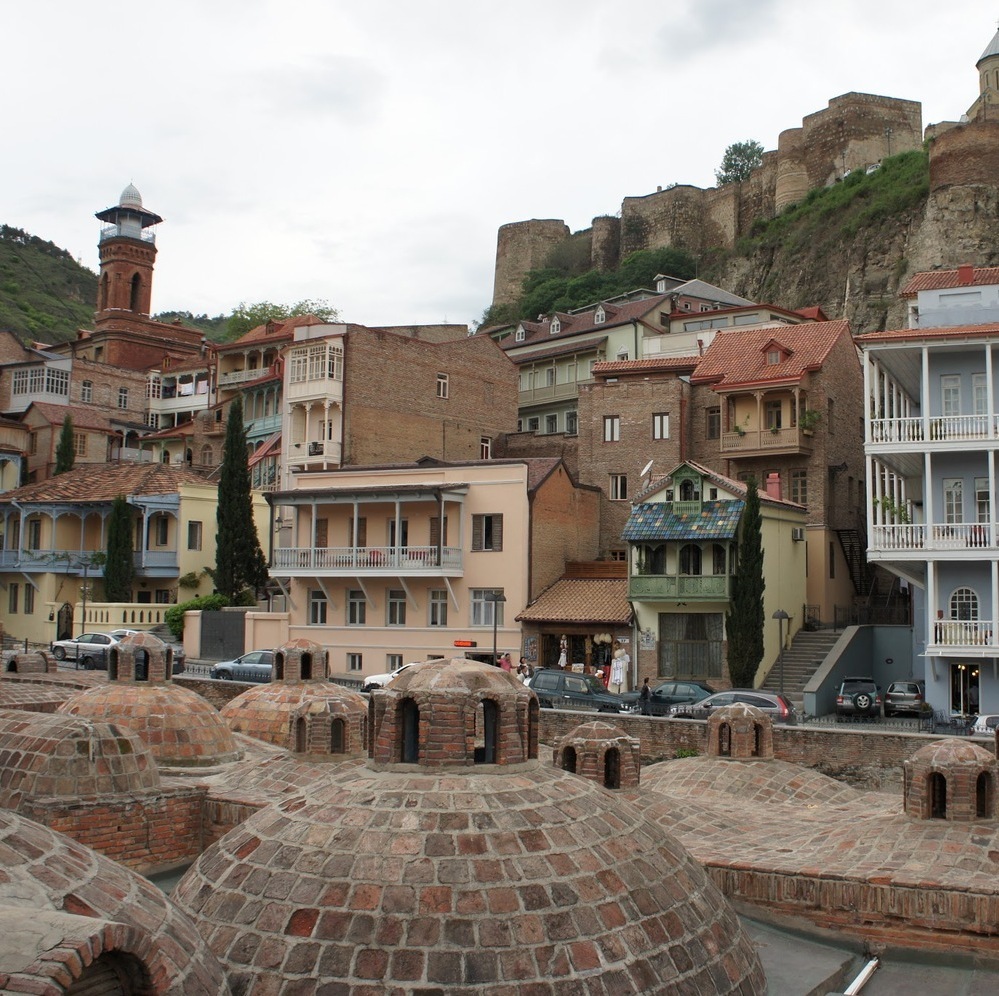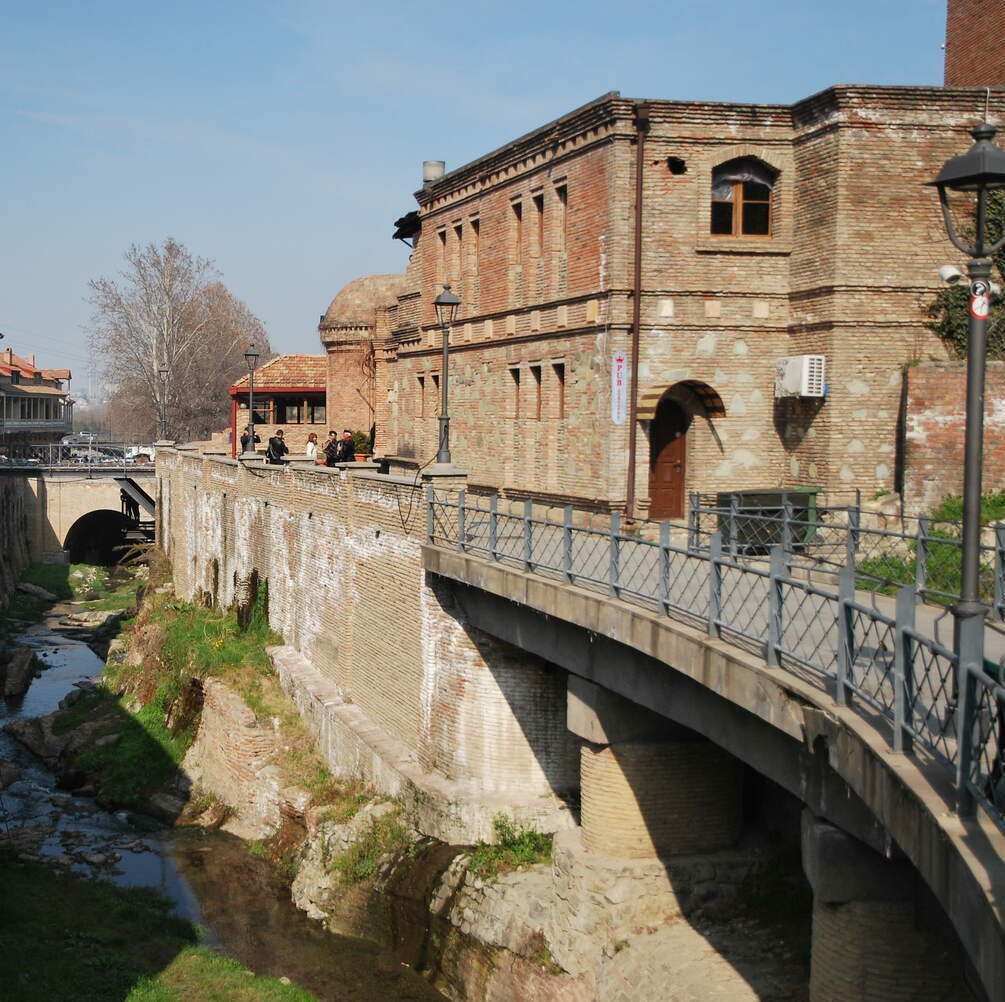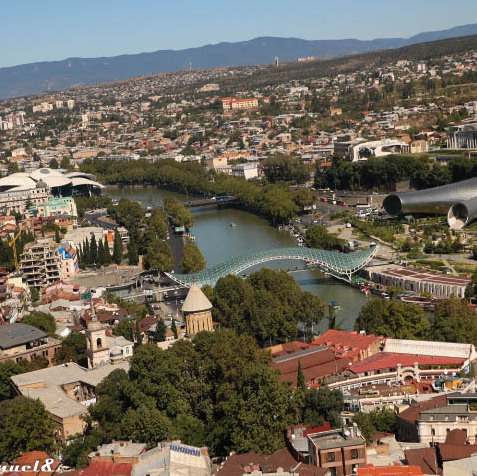- Грузия, Gagarini Street, Кутаиси, 4600
- +995599575298
- georgien13
- georgien@mail.ru
- WhatsApp, Telegram +995599575298
ZURABTRAVEL
Tbilisi
Tbilisi - a fantastic city, where naturally co-exists Europe and Asia in harmony. It is a mixture of history, modernity and picturesque ,quaint and charming parts of the city. Tbilisi is 1500 years old and each century played an important role in formation its modern view. Narrow streets of the old city, cobbled bridges, inner gardens and yards with the uniquely carved ornaments on balconies. Unbelievably proportioned ancient cathedrals - these are unimaginable beauty of the city. Tbilisi - it is a city of its own taste and sound. Walking along its streets is amazing any time of the year. To be lost in its tortuous streets, to feel the slow pace of the city and then to find yourself in one of the small restaurants, that is what differentiates Tbilisi from other cities. We offer you to introduce Tbilisi with its well-known and not so much known places. During walking tour we will see every attraction and sightseeings in the old and also in the modern parts of the city. According to legend the city was founded in the mid 5th century by king Vakhtang Gorgasali who encountered numerous hot springs while hunting in the area and was so impressed that he decreed that a new city be build on this site. He even ordered to relocate capital city from Mtskheta to Tbilisi. If we translate the word Tbili, in English it means warm. We will encounter this story from the legend in the neighborhood of tbilisi Abanotubani ( bath district ) - known for its sulphuric baths. Warm sulphuric water protrudes from the underground and is essentially effective for skin as well as for the whole organism. On the place where once king Vakhtang hunted , there is Narikala fortress now, also called the Mother fortress of Tbilisi. The fortress was established in the 4th century, around the period when the city itself was founded. There are stunning views over the whole city from the fortress, it is equally beautiful at night too especially when the city lights shine below. Meidan - is in the centre of old Tbilisi. It used to be the site of Tbilisi’s bustling main bazaar, the place of hotels and famous dukhans. Now there is well known walking street Sharden with small cafes and restaurants, with boutiques and modern handmade craft shops and souvenirs. There we can visit Sioni cathedral which was the main theological institution of the city until 2006. There is preserves many relics , among them is St. Nino’s cross. The first church was built in the sixth century there, and was renewed in different centuries. The biggest cathedral of Tbilisi and Georgia is Holy Trinity Cathedral of Tbilisi commonly known as Sameba. Constructed between 1995 and 2004, it is the third-tallest Eastern Orthodox cathedral in the world and one of the largest religious buildings in the world by total area. It is located on Elia mountain and is visible from almost every point of Tbilisi. One of the most visited place in Tbilisi is the Mtatsminda Pantheon of Writers and Public Figures, where some of the most prominent writers, artists, scholars, and national heroes of Georgia are buried. Father David, who founded the Gareja Monastery before going to Gareji, he worked in Tbilisi, east of Mtatsminda, on the rock where he carved a cave. After Father David left the cave, people named the mountain "Mamadaviti" in his honor. In the X-XI centuries the second name of Mamadaviti mountain was named - Mtatsminda. The first celebrities to be buried at this place were the Russian writer Alexander Griboyedov (1795–1829) and his Georgian wife Nino Chavchavadze (1812–1857). The Pantheon was officially opened in 1929 to mark the centenary of Griboyedov's death during his time as the Russian ambassador. The Pantheon is administered by the Government of Tbilisi and is frequented by locals as well as the city’s visitors. Above it there is Mtatsminda park which is famous landscaped park located at the top of Mount Mtatsminda overlooking the city. The park has carousels, water slides, a roller-coaster, dark ride, funicular, and a big Ferris Wheel at the edge of the mountain, offering a splendid view over the city. When it is clear sky you can see snowy caucasus mountain range. Among beautiful attractions you should not miss the Bridge of Peace. It is a bow-shaped pedestrian bridge, a steel and glass construction illuminated with numerous LEDs, over the River Mtkvari. Since its opening in 2010 the structure has become an important pedestrian crossing in the city, as well as a significant tourist attraction and one of the most well-recognized landmarks of the capital. It is significantly beautiful at night when the lights make it shine like a diamond. On the second part of the bridge there is Rike park with dancing fountains and laser-shows. In the old city there is distinctively original architecture of Marionette Theatre. The Gabriadze Theater with its clock stands in the heart of Tbilisi’s historic Old Town. This beautiful building of the unique marionette theatre was designed by Gabriadze himself. There are mini performances every morning and evening in the street what made this place even more popular among tourists and locals. Among must-see places there is Rustaveli avenue, where every building breathes by its history. The next location is ethnographical museum which is near Turtle Lake. There you can find maquette of houses even from Bronze Age till now. It is interesting not only architecture but everyday objects, clothes, furniture, embroideries, jewelry and arms which are associated to Georgia’s history. That is only small part from the diversity you can visit here. Tbilisi will charm you with its unique atmosphere and aura, with its ability to absorb parts of different culture and at the same time stay on its own roots. After getting known Tbilisi you will find out that it is inhabited by warm people, where every guest feels himself/ herself as being at home.
